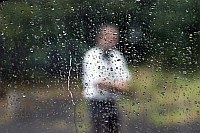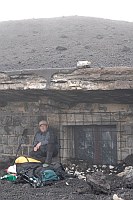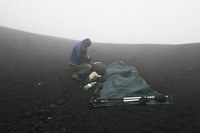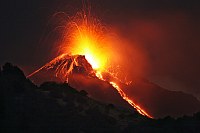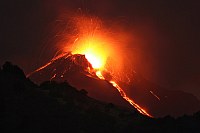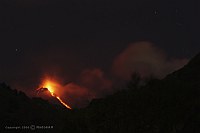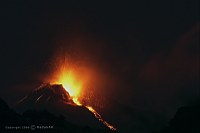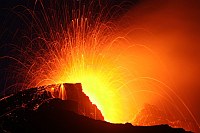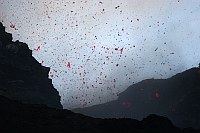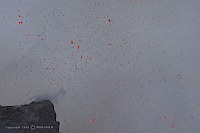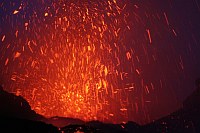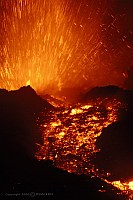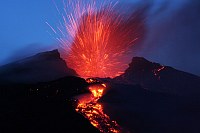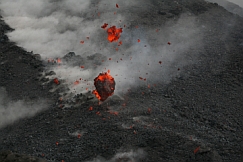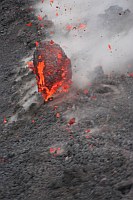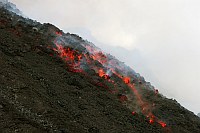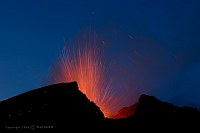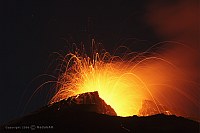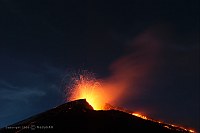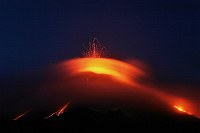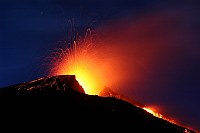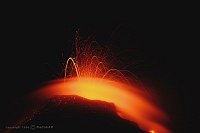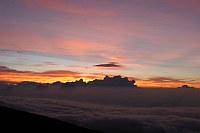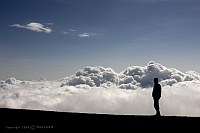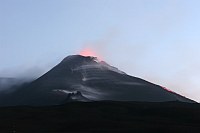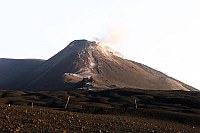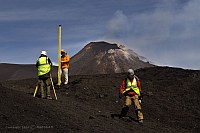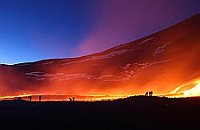Before the third
night we tried to reach the summit to stay overnight near the
SE-crater areal. Actually the weathter teared up at 3000m and
a real crystal clear view was offering the fiery beauty to us.
Our position below the lava stream was not completely harmless,
because due to its "low'' temperature of apprx. 900°C (datas
of the english volcano team) the lava stream was of an debris
consistence. At the entire east slope the lava was rolling
down in big bullets. The speedy hot balls with a diameter up
to four meters disintegrated by their own centrifugal force or
cracked under their own weight with a intensive red glowing.
Appreciating our safe position nobody believed that such an
egg will pass the front pit and afterwards the old lava stream
from July 2006. Howsoever it came different ....
Der
ultimative lava bullet report from S&W Braunsdorf
 s&w
s&w
Afterwards you'll
quite understand why the two are dreaming continiously from
large red balls!
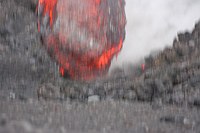 nr
nr
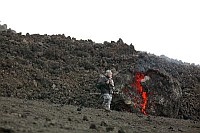 s&w
s&w
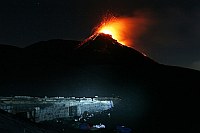
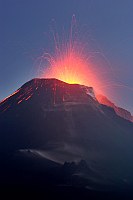
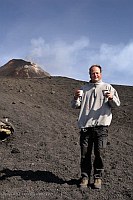
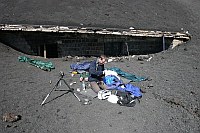 tb
tb
CO2 TDF
Andre, a local
mountain leader told us that he was digging with a mini
excavator at the southwest side of the TDF building again up. The advantage is, you can protect yourself from the
strong storm under the cantilevered roof at least. This can
turn out in winter as a very useful facillity. The
disadvantages: Smells like a city central staition
toilet while the wind strength is still hard. A
view inside the building let me understand. Since the outbreak
of December 2002 the permanent meter-high lapilli layer
let the ceiling get one of the most collapse-endangered
building part.
A further
hazardous reason was notified to us: Because of
the inside CO2 discharge it
is very dangerous to enter the interior of the building. Due to the measured
hot temperature (80°C) in the rooms, you'll decide very fast
by your own, to locate the oxygen supplyment outside the
building. The reason
for the hot temperature is, that the TDF is situated exactly
on the southeast fracture line of the Mt. Etna.
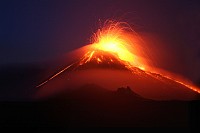
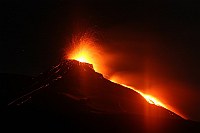 tb
tb
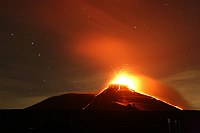
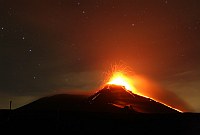 tb
tb
The Southeast
crater in the evening of the
12th of September 06
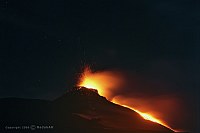
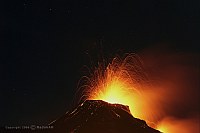 ah
ah
In the second night
the observations were still possible up to 10 pm, but than the
bad weather stopped our intentions completely. Nevertheless it was partly possible
to observe the activity which was decreasing constantly in the
second half of the night. At 4 o'clock in the morning Andreas could only recognize
a weak shine at the edge. Is the activity ending ?
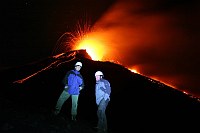
Andreas and me before the Southeast crater. Illuminated by
head lights this photo was exposed one minute.
The end of
activity was confirmed
already in the morning, when no seismic event inside the cone could
be
determined by the english volcano scientists. But their prognosis
was correct that the cone would become
again active. So it happened at the 21rst of September
with the same vehement ongoings.
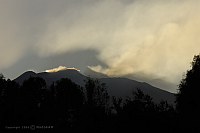
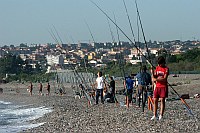
The
silent Etna and fishermen at the beach of Giarre






